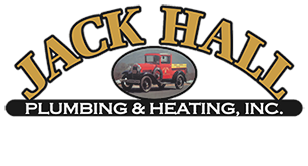How-it-works in Layman’s terms…
An ECM motor maintains a programmed CFM in response to changes in torque. When the sensed torque changes, the RPM of the motor either ramps up or down to maintain the programmed CFM. Sounds confusing, doesn’t it?
Let me put it to you this way. Let’s compare how an ECM motor works to cruise control on a car. When you are using cruise control, you “program” how fast you want the car to go and set that speed (MPH). The RPM’s of the engine run at a certain level to maintain that speed. Now, your car starts to go up a hill. The cruise control senses a change in torque, so it needs to “rev” up the engine so it can maintain your “programmed speed”. Likewise, when you go down a hill, there is less torque on the engine, so the RPM’s are reduced and, again, you are maintaining the programmed speed.
The same thing is occurring with an ECM motor. It works on a relationship between RPM, torque, and CFM (instead of MPH). Instead of a control on the steering column, there is a board in the unit that you need to set up with the “cool”, “adjust”, “heat”, and “delay” profiles (switches, jumpers, etc., depending on manufacturer). Once you have programmed the desired CFM for a particular application, the motor and module do the rest.
Let’s say you have a 3-ton air conditioner. So, we need 400 CFM per ton or 1200 CFM to work properly. You use the programming board and set BOTH the cool and adjust profiles for as close to 1200 CFM as you can. (Always use the manufacturer’s tables for setting up an ECM motor). Now, on a call for cooling, the motor turns on and is going to try to maintain your programmed CFM. Here is where added efficiency comes in because we are maintaining ideal CFM across a range of operating conditions. Of course, as an air conditioner runs, the evaporator is going to get “wet” since we are removing latent heat and humidity. When the coil gets wet, the static pressure of the system goes up. As the static goes up, the motor senses a change in torque (like the car going uphill) and starts to increase the RPM of the motor in order to maintain the CFM of the system. Same thing occurs as a filter gets dirty, return static increases and the motor revs up the RPM to maintain the CFM. Now, as the latent heat decreases and there is less humidity or water on the coil, or someone changes the dirty filter, there is less static, a reduction in torque, so the RPM’s decrease, all the time maintaining CFM.
The same thing occurs in heating mode. You have programmed the motor to maintain a desired “temperature rise” for the system. The motor will deliver that CFM to maintain that rise. But, again, if the filter is getting dirty, the motor’s RPM will increase, to maintain the CFM and temperature rise.
Lastly, you can also program a DELAY profile on the CFM board. This function is only for cooling, but it allows you to further “fine tune” how the motor ramps up and down at the start and end of a call for cooing. You can set a “Normal, Humid, Dry, or factory default profile through the control.
By maintaining proper CFM in cooling, and temperature rise in heating, we get the maximum efficiency out of the furnace and air conditioner. This coupled with the fact that an ECM motor uses less wattage than a PSC motor, you can see why these motors are becoming more and more popular as part of a total energy-efficient system.


